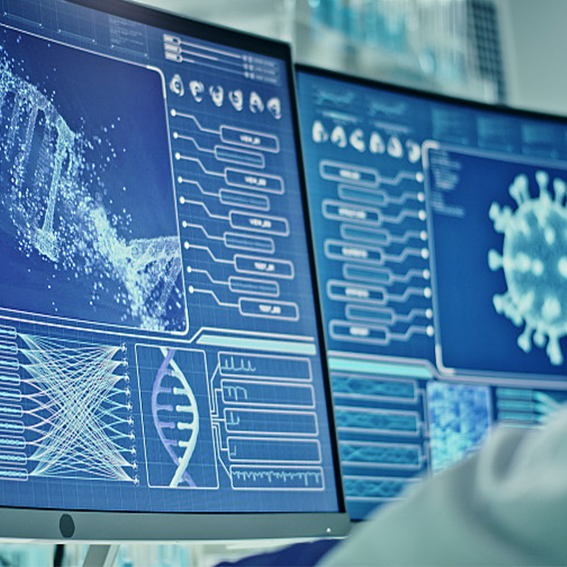
1 | Mission of a Modern Clinical Examination Lab
Integrated facilities translate raw biological specimens into reliable analytical readouts that inform biosurveillance, occupational-health screening, and translational research. By unifying risk-based biosafety, disciplined quality frameworks, and live data pipelines, the laboratory delivers fast, reproducible results while containing cost and environmental footprint.
2 | Facility Layout & Biosafety Foundations
Zone | Primary Activities | Core Controls |
|---|---|---|
| Pre-analytical | Accession, aliquoting, reagent prep | Unidirectional flow, PPE lockers, HEPA-filtered laminar benches |
| Analytical | Hematology, chemistry, molecular assays | Biosafety Level 2 cabinets, chemical fume hoods, pressure-differential HVAC |
| Post-analytical | Data review, report release, archiving | Role-based LIS access, read-only raw-data storage |
Risk-based plans drawn from the WHO Laboratory Biosafety Manual, 4th Ed. emphasize hazard identification over rigid checklists, allowing smaller facilities to right-size controls without compromising safety. Directional airflow, hands-free doors, and disinfectant footbaths further cut cross-contamination.
3 | Specimen Accession & Chain-of-Custody
Barcode-enabled LIMS tickets time-stamp every hand-off—collection, transport, intake—so deviations in hold time or temperature trace back instantly. Academic core labs demonstrate that electronic custody logs cut accession errors by 40 % compared with paper forms.
4 | Pre-Analytical Best Practices
Collection & Transport – CDC guidelines stress correct swab type, anticoagulant, and primary tube fill volume; mishandled specimens are the leading source of analytical bias.
Temperature Control – Use IATA-compliant triple packaging and CDC storage ranges for each matrix (2–8 °C for serum; ≤ –70 °C for nucleic-acid panels).
Aliquoting – Dedicated class II cabinets with filtered tips prevent carry-over of cellular debris that can interfere with downstream optics.
5 | Analytical Workflows
Discipline | Typical Platform | Throughput | Inline QC |
|---|---|---|---|
| Hematology | 5-part laser diff analyzers | 60–120 samples h⁻¹ | X̄-bar & R charts per 20 samples |
| Clinical Chemistry | Modular photometric analyzers | 800–2 000 tests h⁻¹ | Twin liquid QC vials per shift |
| Immunoassay | Chemiluminescent auto-platforms | 200–600 tests h⁻¹ | Lot-tracked calibrators every 8 h |
| Molecular Panels | 96-well qPCR, multiplex LAMP | <90 min run | Dual-target internal controls each plate |
Automated track systems marry centrifugation, decapping, and aliquot dispense, cutting manual touchpoints by 60 % and shrinking turnaround time under four hours for routine panels.
6 | Post-Analytical Release & Data Integrity
Delta-checks flag improbable result shifts against the patient’s historical median, reducing reporting errors.
Autoverification rules (reference range, QC status, delta-check pass) auto-release up to 85 % of routine chemistry results, freeing scientists for complex cases.
Immutable audit trails within the LIS satisfy ISO 15189:2022 clauses on data security and traceability.
7 | Quality Management & Accreditation
Framework | Focus Area | Key Requirement |
|---|---|---|
| CLIA | Accuracy, reliability, timeliness | Verification of every test method twice yearly; PT where available. |
| CAP Checklists | Discipline-specific QC | Documented corrective actions within 30 days of out-of-control event. |
| ISO 15189 | Competence & continuous improvement | Risk/opportunity log with evidence of follow-up actions. |
Participation in CAP or CMS proficiency programs provides external quality assurance; trend charts of PT scores detect analytical drift long before it impacts client reports.
8 | Automation, AI & Digital Twins
Recent LIS integrations support API-level links to middleware, mass spectrometers, and automated storage, building near-real-time digital twins of instrument performance. Systematic reviews in 2024 show productivity gains of 25–35 % once predictive maintenance and reagent-lot tracking are embedded.
9 | Environmental & Ergonomic Sustainability
- Closed-cell reagent pods cut solvent evaporation and analyst exposure.
- LED-based photometers slash energy by 70 % vs. halogen-lamp predecessors.
- Modular benches with anti-fatigue mats reduce musculoskeletal strain, lifting long-term productivity.
10 | Workforce Development
Competency cycles blend micro-learning modules (CLIA blood-borne pathogens, ISO risk management) with annual proficiency panels. Labs reporting staff tenure >5 years maintain lower QC failure rates owing to preserved institutional memory.